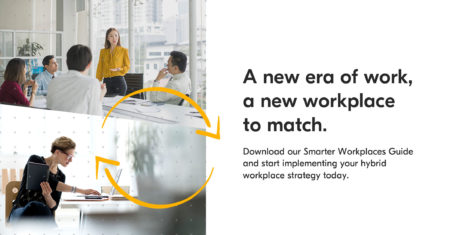 It has taken only 18 months for the world of work to change forever. The traditional office and commute mantra has been overwritten by changing workforce demands.
It has taken only 18 months for the world of work to change forever. The traditional office and commute mantra has been overwritten by changing workforce demands.
But there is a disconnect.
Companies want people back to work; employees want greater flexibility. Companies want to return to the old normal; employees are leaving their companies in droves. The rush of resignations that have swept the globe are indicative of a world that isn’t interested in going back to what was. Which is why, says Werner Engelbrecht, GM at Kyocera Document Solutions South Africa, this is the time to start the business transformation towards a smarter, hybrid workspace that takes both worlds into account.
“Employees are uncertain – they know they don’t want to return to restrictions and limitations of the office workstyle, but they also know that the remote model isn’t giving them that sense of culture and belonging,” Engelbrecht says. “Most people are suffering from burnout having worked all hours of the day from their homes, giving more to the business than in the past. Yet, they also recognise that going back to the office limits their ability to define their workstyles. They want change, but they also need connections.”
The hybrid model is gaining traction because it has the potential to allow for the best of both worlds. Employees can balance their need for connection with their need for flexibility within changing operational boundaries. However, it’s a complex shift in thinking and business processes. While the hybrid model does offer significant benefits, not least of which being employee retention at a time when talent is at a premium, it does offer its own set of problems. The technology must be capable of handling hybrid workloads and the business has to create an entirely new way of approaching working hours, policies and security.
Right policies
“The hybrid model at scale will only succeed with the right policies, platforms, processes and technology in place,” says Engelbrecht. “It asks that companies develop smarter ways of working that embrace the anytime, anywhere work philosophy, but expects that these ways of working are supported by systems that are resilient and capable. You need to empower your workforce, giving them a set of tools that helps them to be agile and responsive. And you need to do this within a robust business framework.”
Moving into a model of work that can adapt to the market, global events and uncertainty with speed is always going to be of value to the business. A look back at 2020 underscores the value of staying ahead of the digital curve – those companies that had taken long strides down the digital transformation path were able to slip into remote working with relative ease. But even they need to now refine and reshape the ways in which employees engage with the business to ensure that the model has longevity and that it is sustainable.
This is the time to optimise processes with new technologies and services that have evolved to meet the hybrid demand
“Investing into technology is one step, it allows for the business to scale its operations up and down easily and in line with hybrid demand,” says Engelbrecht. “Leveraging that technology to build a better work-life balance and ensure employee job satisfaction is the second step. This is the time to optimise processes with new technologies and services that have evolved to meet the hybrid demand, which will enable your workforce to operate smoothly and efficiently. Taking learnings from clients across the globe, Kyocera Document Solutions has developed a guide filled with information from IT specialists that help organisations ensure their hybrid workspace infrastructure is resilient, secure and will continue to benefit the organisation into the future.”
The split between office and home need not be a chasm. It need not define a disconnect between the employee and the business as both struggle to find balance in the new world of work. Instead, it can be an ever-changing and evolving approach to workspace and workstyle that caters to the needs of employees and the business.
“A hybrid model is more than just mixing office and home into one working equation,” concludes Engelbrecht. “It’s a holistic approach to workplace, technology and platform that gives the business immense flexibility and scale. Smarter and more efficient, hybrid workspaces grow with the business and evolve with its people.”
- This promoted content was paid for by the party concerned




